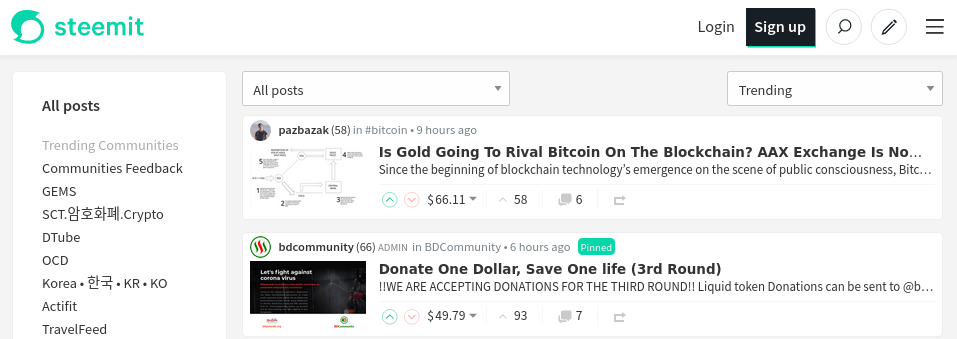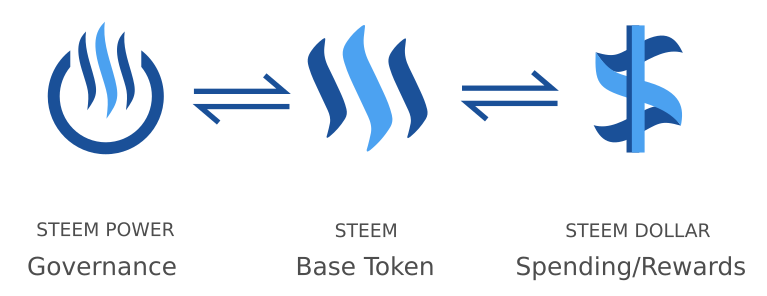What Are Steem and Hive? A Comparison of Both Decentralized Content Blockchains
Steem has been forked to create Hive, a new blockchain designed to maximize decentralization in response to a recent corporate takeover. Can the two blockchains coexist?

Key Takeaways
- After TRON announced its hostile takeover of Steem, the community forked into an alternative called Hive.
- Hive is a blockchain-based content creation platform with a native token and governance model.
- The primary distinctions between the two can be effectively reduced to centralization vs. decentralization.
Share this article
In March 2020, the decentralized content network Steem was acquired by TRON. The Steem community responded to the hostile takeover by launching Hive, a blockchain based on Steem code that aims to combat centralization.
Though the dispute is still underway, the matter is beginning to settle in a way that will determine the future of both blockchains.
Background and History

The Steem blockchain was created in 2016 to power Steemit, a social blogging platform with crypto rewards.
On Steemit, users can post articles, which are stored on Steem’s distributed ledger. Creators and commenters also earn cryptocurrency rewards in the form of Steem dollars (SBD). Rewards are freely distributed according to an inflation mechanism and the value of the base token, STEEM.
Behind the scenes, Steem’s basic STEEM token can be traded for STEEM Power; this allows users to stake their holdings and vote for “witnesses” who govern or control the blockchain.
Takeover By TRON
Shortly after the 2016 launch, Steemit Inc. carried out a “ninja mine” which allowed the company to obtain 80% of the STEEM supply. The Steem community trusted Steemit Inc. to set aside the ninja mined tokens for development purposes and trusted the company not to misuse those funds.
That trust failed when TRON acquired Steem in February 2020 and obtained the ninja-mined funds.
Much of the Steem community disagreed with TRON’s takeover. On Feb. 25, Steem witnesses attempted a soft fork (0.22.2) to prevent TRON from abusing the funds in question.
TRON Retaliates
TRON responded with soft fork 0.22.5, which reversed the previous fork and allowed TRON to access its locked funds. TRON worked with exchanges, who also hold a stake in Steem, to vote for and enact the fork. Justin Sun, CEO of TRON, allegedly used his own holdings to support the fork as well.
Though some exchanges withdrew support, TRON ultimately gained control at the time.
In response, the Steem community prepared to part ways with the TRON-led blockchain. Steem developers launched the Hive blockchain with hard fork 0.23, which took place on Mar. 20, 2020.
Hive Conflict Continues
Following the launch of Hive, each community continued to take measures against the other.
Hive’s governance tracker identified several “sockpuppet” witnesses, who have allegedly been paid to act in TRON’s interests. It is not clear if these accounts have been blacklisted from Hive entirely, but witnesses that run TRON’s 0.22.5 hard fork are not allowed to produce Hive blocks.
Hive has also excluded some TRON-sympathetic accounts from its token airdrop.
Steem has retaliated with softfork 0.22.888, which prevents 20 TRON-sympathetic witnesses from moving their funds on Steem. Steem claims that this is necessary to prevent spam and hostility.
Though witnesses are in conflict, most users do not need to take sides. General accounts work on both Steem and Hive, and there is no need to take special action.
Token Comparison

Steem uses Steem (STEEM) as its basic token, Steem dollars (SBD) as its reward token, and STEEM POWER for witness voting. Hive has two equivalent tokens: Hive (HIVE) and Hive-backed dollars (HBD).
Steem tokens are available on many different exchanges, while Hive tokens are available on just a few exchanges. The data below only considers exchanges that offer regular trading, not airdrops.
As of Apr. 22, 2020, the market breakdown according to CoinGecko is:
| Rank | Market Cap | Price | 24-hour Volume | Exchanges/Availability | |
|---|---|---|---|---|---|
| Steem/STEEM | 76 | $52.1 million | $0.148 | $1.7 million | Binance, Bithumb, Huobi, Bittrex, HitBTC, Poloniex, others |
| Steem Dollar/SBD | 244 | $6 million | $0.965 | $55,765 | Bittrex, Upbit, HitBTC |
| Hive/HIVE | 91 | $40 million | $0.114 | $155,991 | Probit, Bittrex |
| Hive-Backed Dollar/HBD | 4,364 | No data | $0.759 | $5,808 | Bittrex |
| Steem Power/SP | No data | No data | No data | No data | From Steem |
This data is subject to change. The HIVE token was created suddenly, meaning that its long-term value is uncertain.
Though HIVE is roughly on par with STEEM in terms of price and market cap right now, there is an obvious issue: Hive has not shown that HBD can maintain parity with the dollar.
STEEM’s value may change as well. TRON is considering a token swap that would allow STEEM holders to exchange their tokens for TRON-based tokens—a decision that may affect token prices.
Leadership and Ownership
Steem is famously recognized as a blockchain created by Dan Larimer, the creator of EOS and Bitshares.
However, Larimer left the project in 2016, leaving the project to co-creator Ned Scott, who led Steemit Inc. as CEO until January 2019. Elizabeth Powell then led the company as managing director after that.
Though TRON CEO Justin Sun owns Steemit following his company’s acquisition, it is not clear if Steem’s leadership will change under his ownership. Scott has expressed support for TRON’s involvement, and press releases have emphasized that TRON’s involvement will be a strategic partnership.
Meanwhile, Hive has no official leadership. There are about 30 community developers and 80 contributors working on the project, and there is no company behind the project.
Hive’s about page reads: “With a diverse community of stakeholders and without controlling bad actors, individuals can experience true ownership in a decentralised blockchain & cryptocurrency.”
In other words, Hive’s lack of absolute leadership is its greatest selling point.
DApp Ecosystem
Steem primarily serves as the basis of Steemit; Hive’s equivalent platform is Peakd.
However, both platforms also host several unrelated third-party DApps. Steem hosts 88 other DApps, the most significant of which are the trading card game Steem Monsters, the decentralized video platform DTube, and the Instagram-like photo-sharing platform APPICS.
As of April 2020, 11 DApps have migrated away from Steem and/or aligned themselves with Hive, including the collectible card game Splinterlands and the video platform 3speak.
Decentralization and Governance

Steem and Hive both rely on delegated proof-of-stake consensus (DPOS), which allows token holders to vote for block witnesses. These witnesses govern the blockchain and make decisions.
Steem decentralizes power to some extent by allowing token holders to vote. However, Hive aims to replace the point of centralization that allowed TRON to buyout the voting process.
Hive’s solution is the Decentralized Hive Fund (DHF), which allows users to suggest proposals, fund those proposals, and cast a vote for their preferred changes. Unlike with Steem’s reserve of “ninja mined” funds, Hive’s fund is set up so that no actor (or group of actors) can have sole control over big changes.
DHF funds are also time-locked: funds that have been allocated to the fund will not be available until after a future Hive upgrade, and they will be paid out slowly to prevent market flooding.
In Summary
Both Steem and Hive appear to be in a strong position, and each has its own strengths and weaknesses:
Qualities of Steem:
- Strong branding and long history
- Higher STEEM value and SBD dollar parity
- Large DApp ecosystem
- Controversial but strong leadership from TRON
Qualities of Hive:
- Decentralized structure and fund management
- High HIVE value, but lack of HBD dollar parity
- Small but promising DApp ecosystem
- Involvement from long-standing Steem members
Fortunately, users do not have to choose between one blockchain or the other at the moment.
